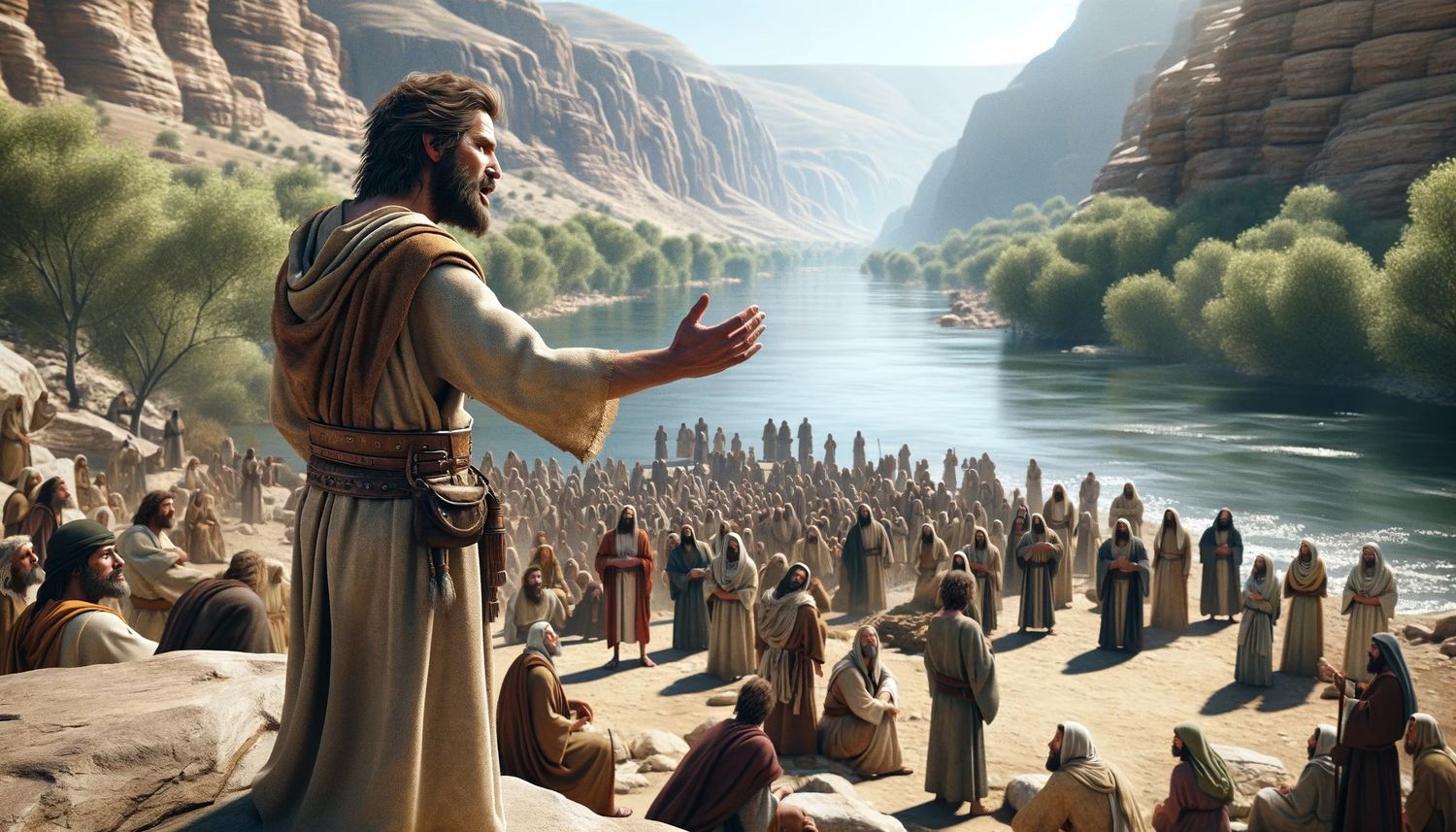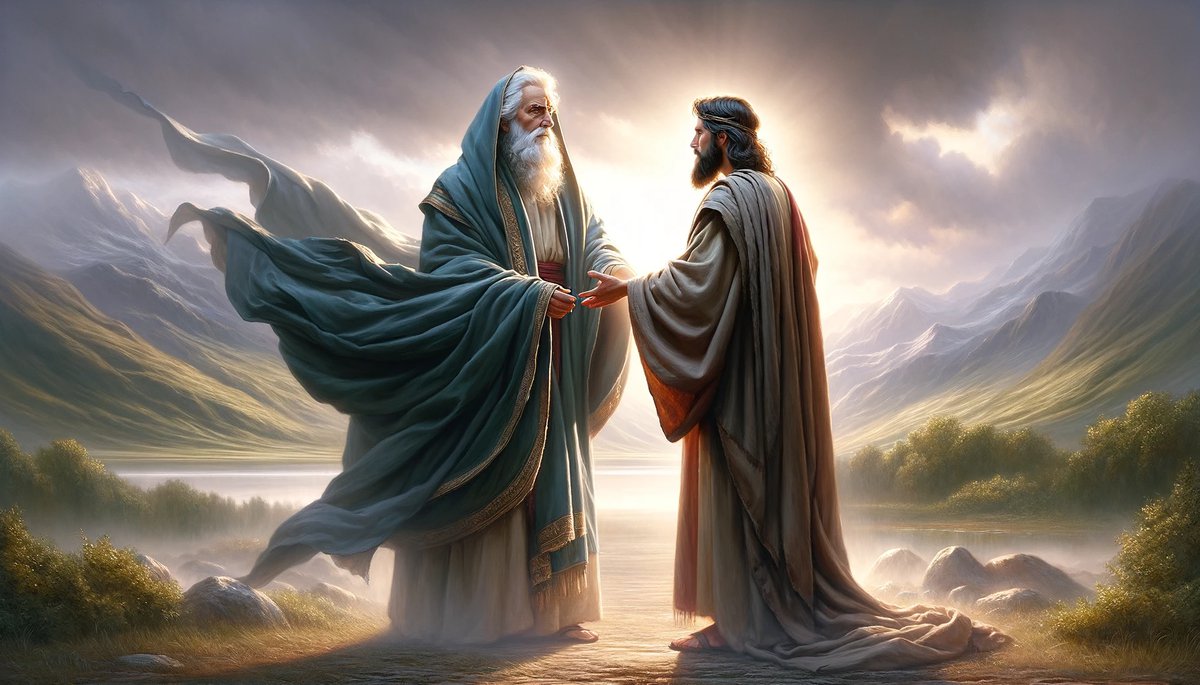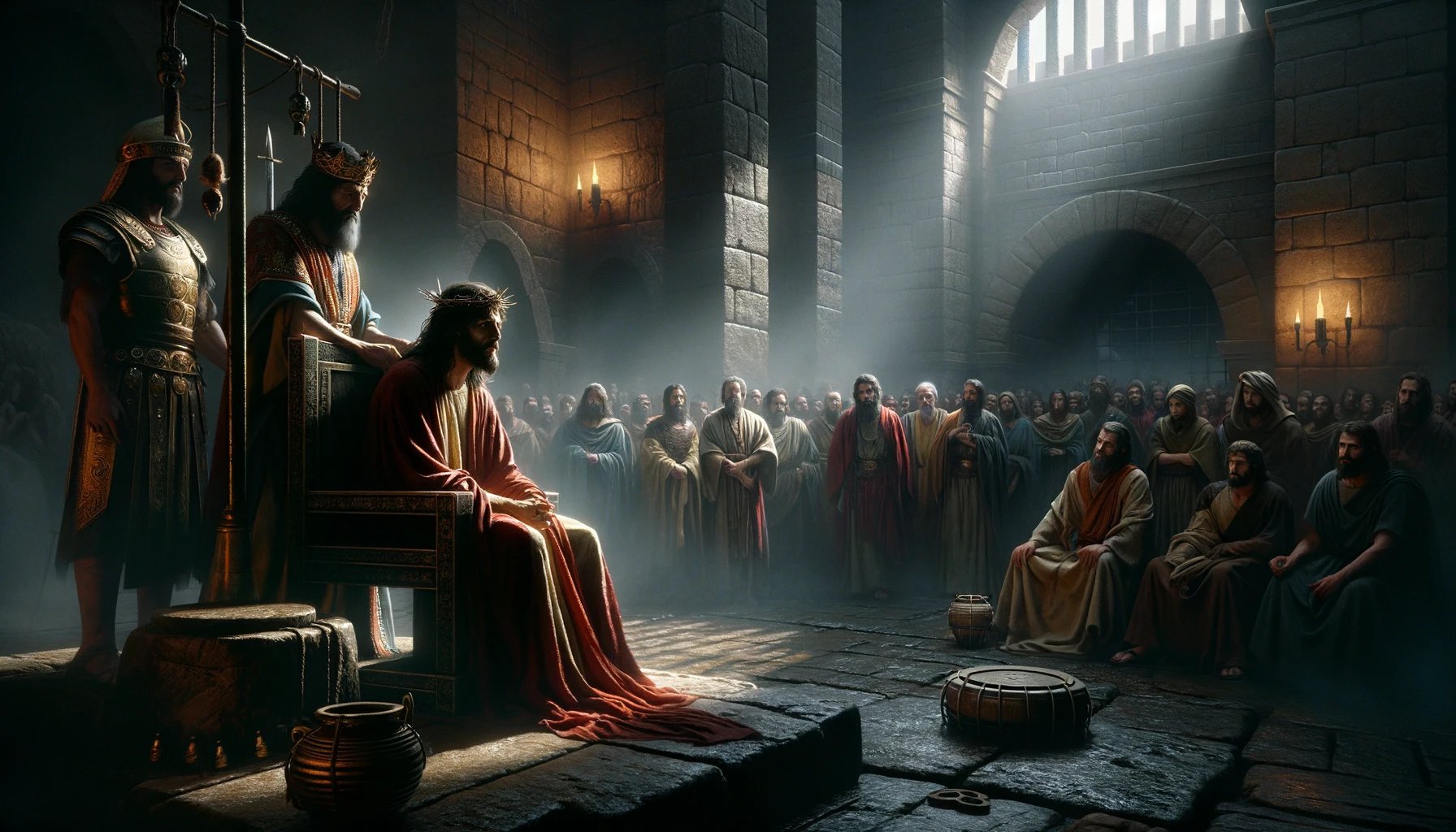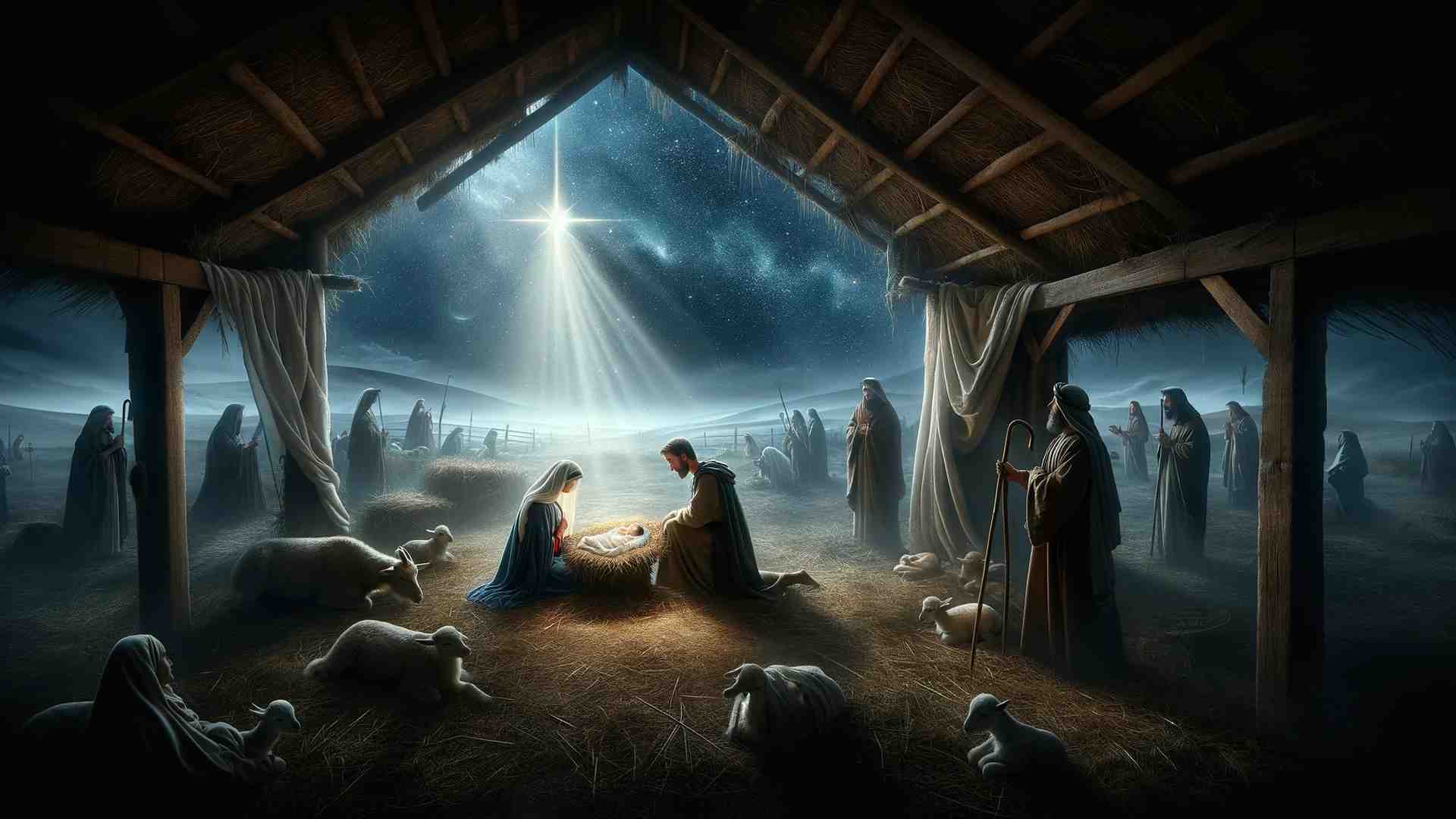Home>Christian Videos>Bible Stories>Why Did John See Jesus Christ In The Form Of A Lamb?
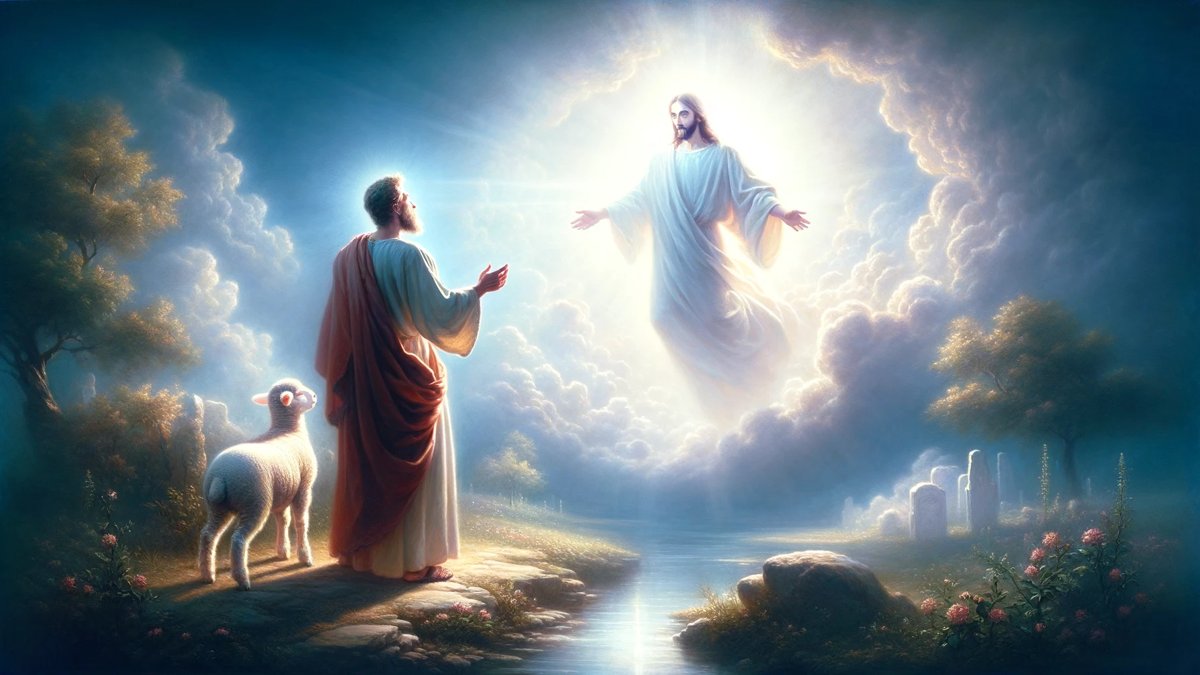

Bible Stories
Why Did John See Jesus Christ In The Form Of A Lamb?
Published: March 3, 2024
Jason DeRose, Managing Editor at Christian.net, uses his expertise in religion and journalism to deepen understanding of faith's societal impacts. His editorial leadership, coupled with a strong academic background, enriches the platform’s diverse content, earning him recognition in both journalism and religious circles.
Discover the significance of John seeing Jesus Christ in the form of a lamb in this intriguing Bible story. Explore the deeper meaning and symbolism behind this powerful encounter. Unlock the spiritual insights today!
(Many of the links in this article redirect to a specific reviewed product. Your purchase of these products through affiliate links helps to generate commission for Christian.net, at no extra cost. Learn more)
Table of Contents
The significance of John's vision
-
Revelation of Jesus Christ: The vision of Jesus Christ as a lamb holds immense significance as it reveals a profound aspect of Christ's nature. It portrays Jesus as the sacrificial lamb, emphasizing his role in atonement and redemption.
-
Symbol of Sacrifice: John's vision of Jesus as a lamb signifies the sacrificial nature of Christ's mission on earth. It symbolizes his willingness to offer himself as a sacrifice for the salvation of humanity, highlighting the ultimate act of love and selflessness.
-
Redemption and Atonement: The vision underscores the concept of redemption and atonement in Christian theology. It serves as a powerful reminder of Christ's sacrificial death, which is central to the Christian faith and the forgiveness of sins.
-
Victorious Savior: Despite the imagery of a sacrificial lamb, the vision also portrays Jesus as a victorious Savior. The lamb is depicted as standing, having triumphed over death and sin, signifying the ultimate victory of Christ over evil and the assurance of eternal life for believers.
-
Eternal Significance: John's vision of Jesus as a lamb carries eternal significance, as it points to the eternal nature of Christ's sacrifice and its everlasting impact on humanity. It serves as a timeless symbol of hope, redemption, and the promise of salvation for all who believe.
-
Emphasis on Humility and Purity: The vision of Jesus as a lamb emphasizes the qualities of humility and purity. It reflects Christ's humility in taking on the form of a servant and his unblemished purity, highlighting the moral and spiritual virtues that believers are called to emulate.
-
Foreshadowing the Paschal Lamb: In the context of the Passover tradition, the vision of Jesus as a lamb also carries deep significance, foreshadowing Christ as the ultimate Paschal Lamb whose sacrifice brings deliverance and freedom from bondage.
-
Personal Reflection and Worship: For believers, John's vision of Jesus as a lamb serves as a source of personal reflection and worship. It invites individuals to contemplate the depth of Christ's sacrifice and to respond with gratitude, reverence, and devotion.
In essence, the significance of John's vision of Jesus as a lamb lies in its multifaceted representation of Christ's redemptive work, the triumph of good over evil, and the eternal hope it offers to all who embrace the message of the Gospel.
Read more: Why Is Jesus Christ Called The Lamb Of God
The symbolism of Jesus Christ as a lamb
-
Sacrificial Atonement: The symbolism of Jesus Christ as a lamb is deeply rooted in the concept of sacrificial atonement. In the Old Testament, lambs were commonly used as sacrificial offerings for the forgiveness of sins. This symbolism is carried forward in the New Testament, where Jesus is portrayed as the ultimate sacrificial lamb whose death atones for the sins of humanity.
-
Innocence and Purity: The image of a lamb conveys the qualities of innocence and purity. In the Christian context, Jesus Christ is often referred to as the "Lamb of God," emphasizing his sinless nature and moral purity. This symbolism underscores the unblemished character of Christ and his role as the perfect, spotless sacrifice for the redemption of mankind.
-
Substitutionary Atonement: The symbolism of the lamb also points to the concept of substitutionary atonement. In ancient sacrificial practices, a lamb would bear the consequences of the people's transgressions, serving as a substitute for their punishment. Similarly, Jesus Christ, as the sacrificial lamb, takes upon himself the sins of humanity, offering a substitutionary atonement that brings reconciliation between God and humanity.
-
Humility and Servanthood: The imagery of a lamb symbolizes humility and servanthood. Jesus, in his earthly ministry, exemplified these qualities, teaching his followers the principles of servanthood and selfless love. The symbolism of the lamb underscores Christ's humble nature and his willingness to serve, ultimately culminating in the ultimate act of sacrifice for the greater good of humanity.
-
Redemptive Power: The symbolism of Jesus Christ as a lamb also signifies the redemptive power of his sacrifice. Through his death and resurrection, Christ brings about redemption, offering a pathway to salvation and eternal life. The lamb imagery encapsulates the transformative and redemptive impact of Christ's atoning sacrifice, providing hope and restoration to those who embrace his message.
-
Paschal Symbolism: Additionally, the symbolism of the lamb is connected to the Passover tradition in Judaism. In the New Testament, Jesus' sacrificial role as the Paschal Lamb parallels the deliverance and liberation brought about by the Passover lamb in the Old Testament. This symbolism underscores Christ as the ultimate source of deliverance and freedom from spiritual bondage.
In summary, the symbolism of Jesus Christ as a lamb encompasses multifaceted layers of meaning, including sacrificial atonement, innocence, substitutionary atonement, humility, redemptive power, and paschal symbolism. It serves as a powerful and enduring representation of Christ's central role in the redemption and salvation of humanity.
The biblical context of the vision
The biblical context of John's vision of Jesus as a lamb is found in the book of Revelation, specifically in Revelation 5:6-14. In this passage, John describes a vision he experiences while in the presence of God. He sees a scroll in the right hand of God, sealed with seven seals, which represents the divine plan of redemption and judgment. As John weeps because no one is found worthy to open the scroll, one of the elders reassures him that the Lion of the tribe of Judah, the Root of David, has triumphed and is able to open the scroll. However, when John looks, he sees not a lion, but a lamb, standing as if it had been slain, taking the scroll from the right hand of God. This powerful imagery sets the stage for the unfolding of apocalyptic events and the revelation of Christ's ultimate authority and redemptive work.
The vision of Jesus as a lamb in the biblical context is deeply rooted in Old Testament symbolism and prophecy. The portrayal of Jesus as the sacrificial lamb draws from the rich tapestry of Old Testament imagery, particularly the sacrificial system established in the Mosaic law. In the Old Testament, lambs were commonly used as sacrificial offerings for the atonement of sins, as seen in the rituals of the Passover and the Day of Atonement. These sacrificial practices foreshadowed the ultimate sacrifice of Jesus Christ, who, as the perfect and unblemished lamb, would offer himself as the atoning sacrifice for the sins of humanity.
Furthermore, the vision of Jesus as a lamb in the book of Revelation aligns with the Messianic prophecies found in the Old Testament. The imagery of the suffering servant in Isaiah 53, for instance, depicts a figure who would bear the iniquities of many and be led like a lamb to the slaughter. This prophetic portrayal finds its fulfillment in the person of Jesus Christ, who willingly embraces the role of the sacrificial lamb, bearing the sins of the world and offering redemption through his selfless sacrifice.
Moreover, the biblical context of the vision underscores the cosmic significance of Christ's redemptive work. The opening of the seals and the subsequent events in the book of Revelation reveal the unfolding of God's divine plan for the culmination of history and the establishment of His kingdom. The vision of Jesus as a lamb, therefore, serves as a pivotal moment in the cosmic drama of redemption, signaling the central role of Christ in bringing about the ultimate victory over sin, evil, and death.
In essence, the biblical context of John's vision of Jesus as a lamb is intricately woven into the tapestry of Old Testament symbolism, Messianic prophecy, and the cosmic drama of redemption. It serves as a profound revelation of Christ's sacrificial atonement, his fulfillment of Messianic expectations, and his pivotal role in the unfolding of God's redemptive plan for humanity.
The theological implications of the vision
The vision of Jesus as a lamb in the book of Revelation carries profound theological implications that resonate throughout Christian doctrine and belief. These implications encompass core theological themes and doctrines that shape the understanding of Christ's redemptive work, the nature of God, and the eschatological hope of believers.
1. Atonement and Redemption
The vision underscores the theological concept of atonement, emphasizing Christ's sacrificial death as the means of reconciling humanity with God. It highlights the centrality of Christ's atoning sacrifice in securing redemption and forgiveness of sins, echoing the New Testament teachings on the redemptive power of Christ's blood shed on the cross.
Read more: Why Did Jesus Christ Die
2. Christological Significance
The vision of Jesus as a lamb holds significant Christological implications, affirming the divine and redemptive nature of Christ. It reinforces the belief in the dual nature of Christ as fully God and fully human, as the sacrificial lamb embodies the union of divine authority and redemptive love in the person of Jesus Christ.
3. Eschatological Hope
The vision carries eschatological implications, pointing to the ultimate fulfillment of God's redemptive plan and the consummation of history. It instills hope in believers by portraying Christ as the victorious lamb who will ultimately bring about the restoration of all things and the establishment of God's eternal kingdom.
4. The Lamb's Authority
The theological implications of the vision also emphasize the authority of the lamb. By taking the scroll from the right hand of God, the lamb demonstrates his sovereignty and role as the divine agent of God's redemptive purposes, affirming his preeminence and lordship over all creation.
5. Sacrificial Love
The vision underscores the theological concept of sacrificial love, portraying Christ's selfless and redemptive love for humanity. It serves as a powerful reminder of the depth of God's love manifested in Christ's willingness to offer himself as the ultimate sacrifice for the salvation of humanity.
Read more: Why Did Jesus Not Save John The Baptist
6. The Triumph of Good Over Evil
The theological implications of the vision highlight the triumph of good over evil through Christ's redemptive work. The imagery of the victorious lamb standing as if slain signifies the ultimate victory of Christ over sin, death, and the forces of darkness, offering assurance of hope and victory to believers.
7. Worship and Adoration
The vision invites theological reflection on the themes of worship and adoration. It calls believers to respond with reverence, gratitude, and adoration for the redemptive work of Christ, acknowledging his supreme worthiness and the eternal significance of his sacrificial atonement.
In summary, the theological implications of John's vision of Jesus as a lamb encompass foundational doctrines of atonement, Christology, eschatology, divine authority, sacrificial love, the triumph of good over evil, and the call to worship. These implications deepen the understanding of Christ's redemptive work and its profound impact on the faith and hope of believers.

